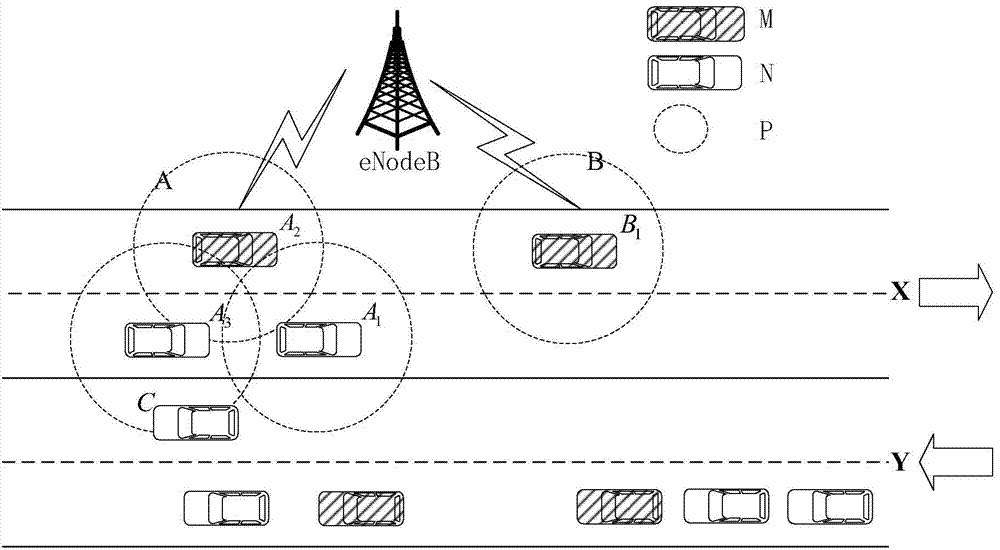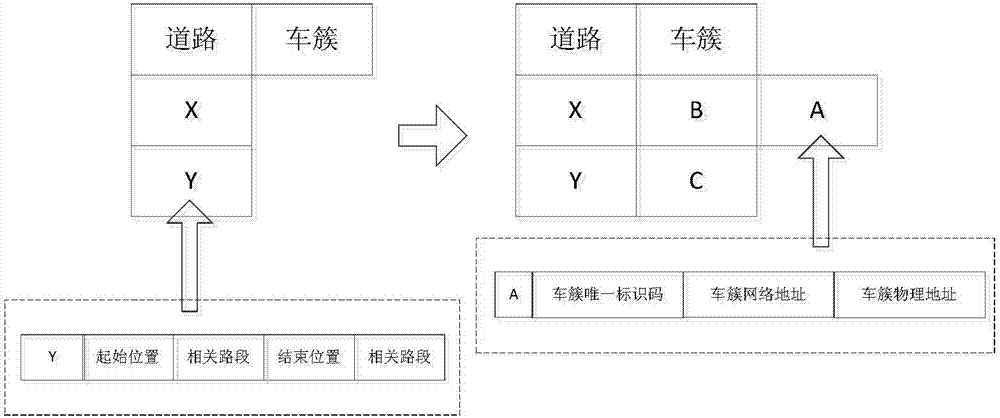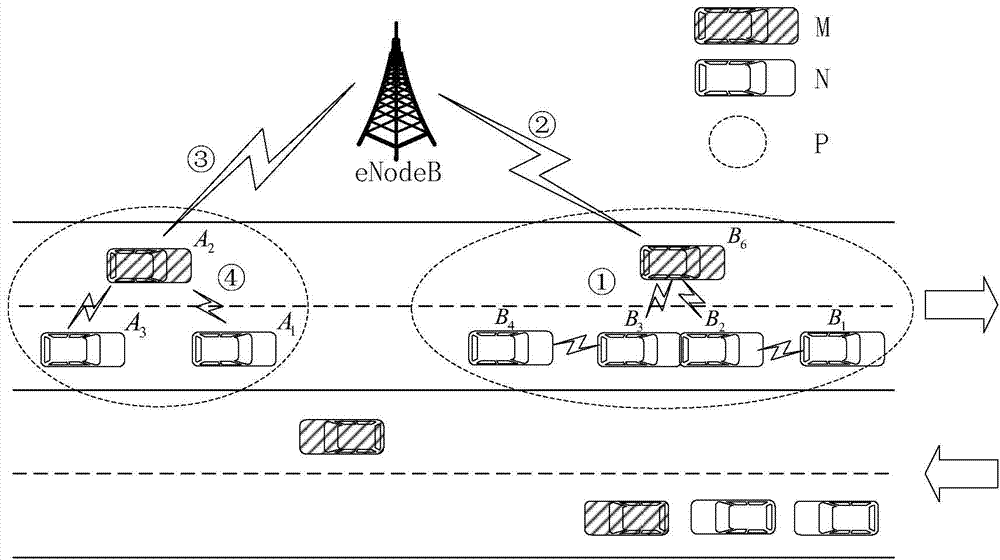802.11p and LTE/LTE-a based vehicle networking message propagation method
An LTE-A, Internet of Vehicles technology, applied in the field of Internet of Vehicles, to achieve the effect of strong implementability, low deployment cost, and prevention of vehicle rear-end accidents
- Summary
- Abstract
- Description
- Claims
- Application Information
AI Technical Summary
Problems solved by technology
Method used
Image
Examples
Embodiment 1
[0024] Embodiment one: if figure 1 As shown, when vehicle A 3 When driving on the road normally, the GPS information acquisition module on the vehicle terminal collects the direction and location information of the vehicle in real time during operation, and at the same time sends a message with its own relevant information to the surrounding vehicles within the effective communication range of the 802.11p communication module. This includes location, speed, LTE signal strength, and more. A 1 、A 2 After receiving the message, if it finds that it is similar to its own information, it will reply, but after receiving the message, vehicle C finds that the two parties are traveling in opposite directions and ignores it. received A 1 、A 2 After the message is replied, if A 1 、A 2 A car cluster has been formed, then A 3 Join the car cluster; if A 1 、A 2 If the two parties are not in the same car cluster, then A 1 、A 2 、A 3 Form same-vehicle clusters and build ad-hoc netwo...
Embodiment 2
[0027] Embodiment two: if image 3 As shown, when vehicle B 2 with B 3 During the driving process, after a rear-end collision occurs due to some reasons, the collided vehicle immediately adopts emergency message dissemination, and the steps are as follows:
[0028] ①Accident vehicle B 2 with B 3 In the mobile ad hoc network, the emergency information is immediately transmitted to the surrounding vehicles through the 802.11p communication module and related routing mechanisms, and the vehicle that receives the emergency safety information forwards it to other vehicles, based on the number of the accident vehicle, which can avoid the flood of the ad hoc network The emergence of widespread problems. Vehicles receiving safety information take different measures after comparing with the location information and driving direction of the accident vehicle, such as in image 3 Medium vehicle B 4 Emergency braking is applied while vehicle B 1 Because it is in front of the acciden...
Embodiment 3
[0032] Embodiment three: as Figure 4 As shown, when the accident location is near the intersection, eNodeB2's forwarding strategy should be to deliver the accident message to all vehicle clusters A and Z leading to the intersection on the four roads. If eNodeB2 cannot transmit the information to the vehicle clusters of all lanes at the intersection, it will transmit the information to eNodeB1, and eNodeB1 will complete the rest. This processing method is also applicable when an accident occurs on a long road covered by two or more eNodeBs.
PUM
 Login to View More
Login to View More Abstract
Description
Claims
Application Information
 Login to View More
Login to View More - R&D
- Intellectual Property
- Life Sciences
- Materials
- Tech Scout
- Unparalleled Data Quality
- Higher Quality Content
- 60% Fewer Hallucinations
Browse by: Latest US Patents, China's latest patents, Technical Efficacy Thesaurus, Application Domain, Technology Topic, Popular Technical Reports.
© 2025 PatSnap. All rights reserved.Legal|Privacy policy|Modern Slavery Act Transparency Statement|Sitemap|About US| Contact US: help@patsnap.com



